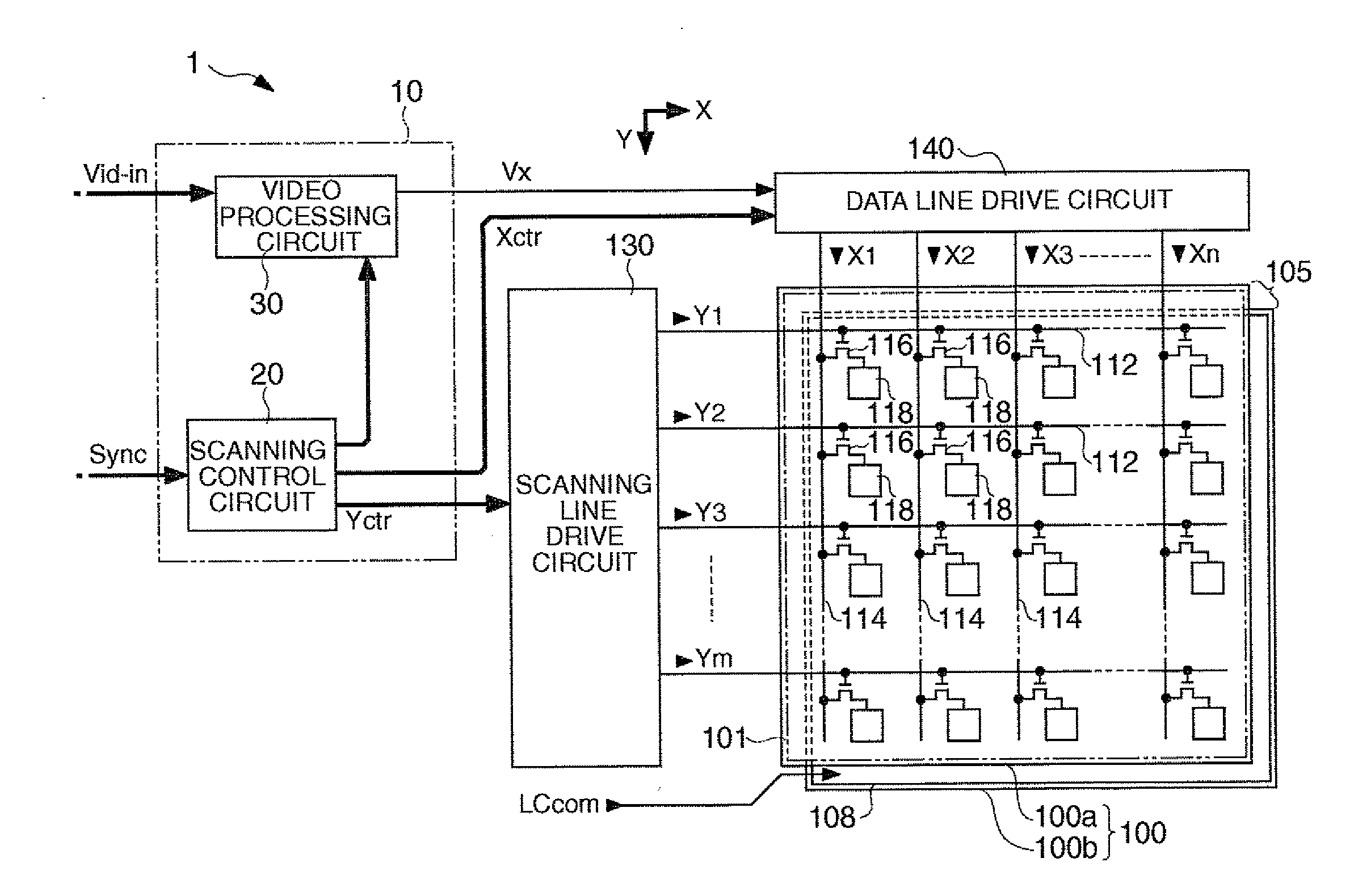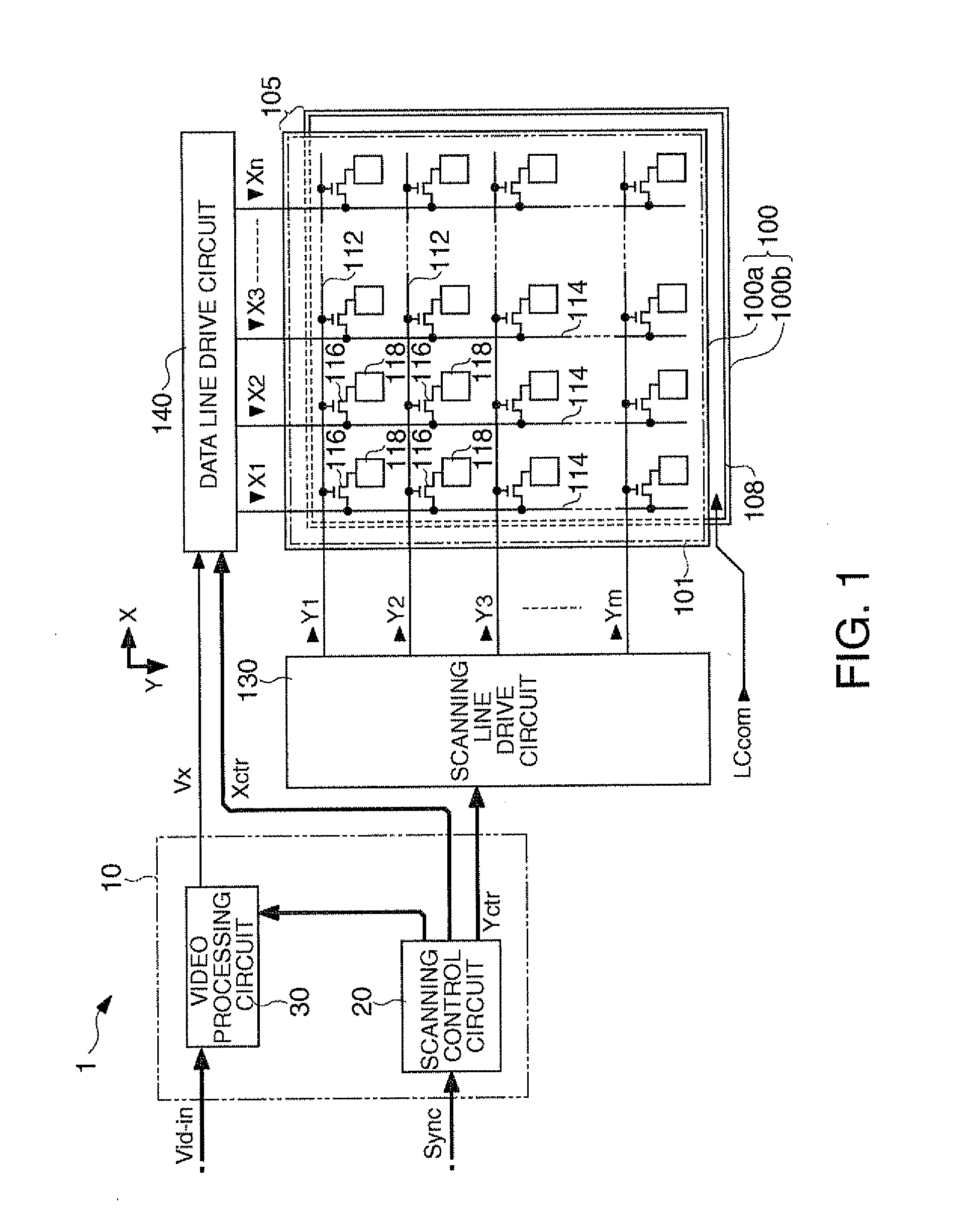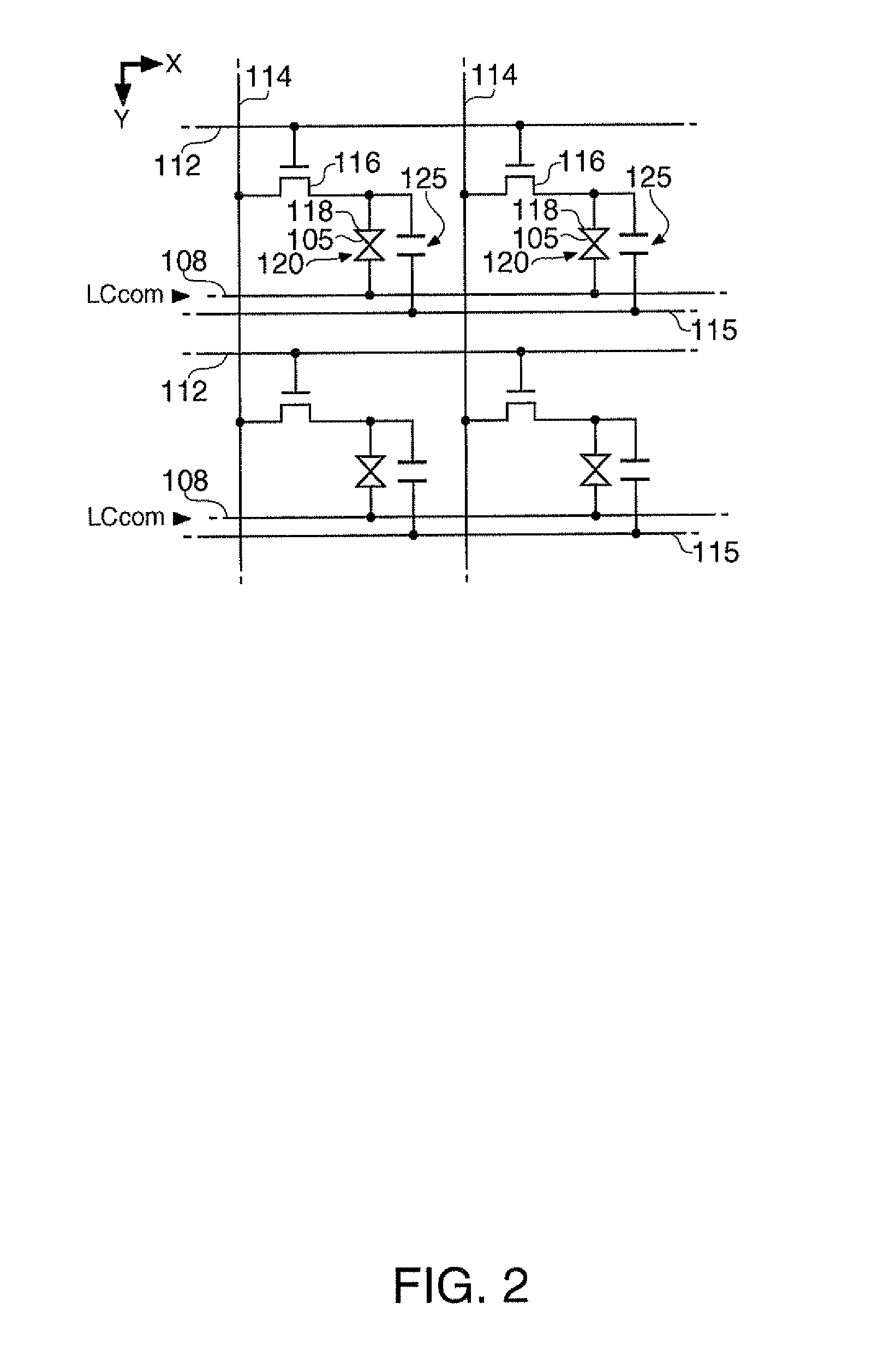Video processing circuit, video processing method, liquid crystal display device, and electronic apparatus
a video processing circuit and video processing method technology, applied in the direction of electric digital data processing, instruments, computing, etc., can solve the problems of display defects, the effect of an electric field generated between adjacent pixel electrodes, and the effect of an electric field in the direction parallel (horizontal) to the substrate surface becoming unignorable, and the aperture ratio is likely to decrease. , to achieve the effect of reducing the reverse tilt domain
- Summary
- Abstract
- Description
- Claims
- Application Information
AI Technical Summary
Benefits of technology
Problems solved by technology
Method used
Image
Examples
first embodiment
[0041]First, a first embodiment of the invention will be described.
[0042]FIG. 1 is a block diagram showing an overall configuration of a liquid crystal display device having a video processing circuit according to this embodiment.
[0043]As shown in FIG. 1, a liquid crystal display device 1 includes a control circuit 10, a liquid crystal panel 100, a scanning line drive circuit 130, and a data line drive circuit 140. A video signal Vid-in is supplied from a high-order device to the control circuit 10 in synchronization with a synchronization signal Sync. The video signal Vid-in is digital data that specifies the gradation levels of the respective pixels in the liquid crystal panel 100 and is supplied in the scanning order based on the vertical / horizontal scanning signals and dot clock signal (not shown) included in the synchronization signal Sync.
[0044]Although the video signal Vid-in specifies the gradation level, since the applied voltage to a liquid crystal device is determined by ...
second embodiment
[0159]Next, a second embodiment of the invention will be described. In this embodiment, it is also assumed that the liquid crystal device operates in the normally black mode. This applies to the following embodiments unless stated otherwise. Moreover, in the following description, the same configurations as in the first embodiment will be denoted by the same reference numerals, and detailed description thereof will be appropriately omitted. In the embodiment described above, the gradation level of only the bright pixels adjacent to the risk boundary was corrected. However, in this embodiment, when two or more (plural) bright pixels are continuous in the direction away from the risk boundary, the gradation level of the plurality of bright pixels is corrected.
[0160]The video processing circuit 30 of this embodiment is different from that of the first embodiment, in that the content determined by the determination portion 324 is changed.
[0161]The determination portion 324 determines wh...
third embodiment
[0171]Next, a third embodiment of the invention will be described.
[0172]In the following description, the same configurations as in the first embodiment will be denoted by the same reference numerals, and detailed description thereof will be appropriately omitted.
[0173]In the first embodiment described above, when it is determined through the analysis of the video signal Vid-in that a dark pixel and a bright pixel are adjacent with the risk boundary disposed therebetween, the gradation level of only the bright pixel was corrected. In contrast, the gradation level may also be corrected for a pixel (a dark pixel in the normally black mode) which is easily affected by a horizontal electric field, and which transitions to a bright pixel in the n-th frame, and whose liquid crystal molecules are in the unstable state in the (n−1)-th frame one frame before the n-th frame. That is, the liquid crystal molecules corresponding to a dark pixel are suppressed from entering the unstable state, wh...
PUM
| Property | Measurement | Unit |
|---|---|---|
| frequency | aaaaa | aaaaa |
| tilt azimuth angle | aaaaa | aaaaa |
| tilt azimuth angle θb | aaaaa | aaaaa |
Abstract
Description
Claims
Application Information
 Login to View More
Login to View More - R&D
- Intellectual Property
- Life Sciences
- Materials
- Tech Scout
- Unparalleled Data Quality
- Higher Quality Content
- 60% Fewer Hallucinations
Browse by: Latest US Patents, China's latest patents, Technical Efficacy Thesaurus, Application Domain, Technology Topic, Popular Technical Reports.
© 2025 PatSnap. All rights reserved.Legal|Privacy policy|Modern Slavery Act Transparency Statement|Sitemap|About US| Contact US: help@patsnap.com



